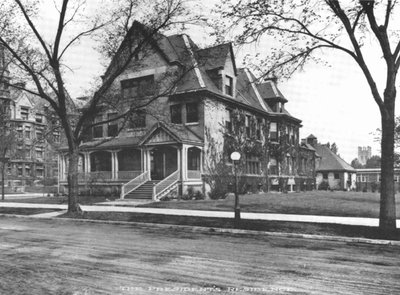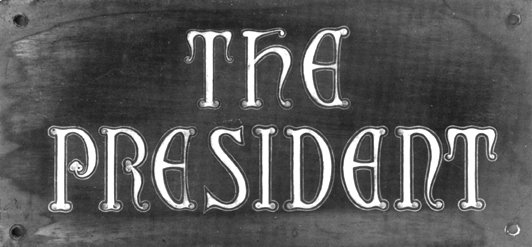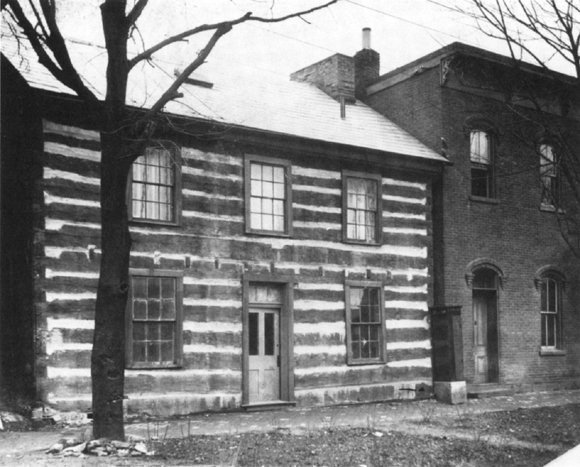Introduction

0n July 1, 1896, the University of Chicago commemorated the fifth anniversary of its founding. In preparation for this Quinquennial celebration, University officials considered which date should mark the formal beginning of the institution's life. Several events in the University's brief history seemed particularly notable. The original Board of Trustees had first met on July 9, 1890; the University's certificate of incorporation was issued by the state of Illinois on September 10, 1890; and the first day of classes on the new campus was October 1, 1892. In the end, however, the date chosen to represent the founding was July 1, 1891, the day on which William Rainey Harper had formally assumed his duties as the first president of the University. The selection of this day as the University's true point of origin fixed the date of the Quinquennial in 1896, and it has governed the scheduling of every successive anniversary celebration over the past century, including the Centennial.
The significance attached to the beginning of Harper's presidency was in part a reflection of the enormous influence he exerted on the creation and shaping of the University. Faculty and students credited him with everything both good and bad that they saw in the raw, young institution, and the same was true for many observers at greater distance from the muddy campus. Harper's educational plan may have been more a skillful synthesis than a radical departure, but it won him an enormous amount of publicity in the popular press. When cartoonists depicted the triumphs and foibles of the new University, it was invariably the stocky, energetic figure of Harper himself that provoked the most vivid caricature.
Harper's fame was not an isolated phenomenon. Beginning in the period just after the Civil War, American university presidents acquired roles of increasing consequence in national life. Unlike their clerical predecessors of the earlier collegiate era, the new generation of university presidents relished the growth of higher education and avidly promoted its influence in social, commercial, and political affairs. James B. Angell at Michigan, Andrew D. White at Cornell, Charles W. Eliot at Harvard, Daniel Coit Gilman at Johns Hopkins, and Nicholas Murray Butler at Columbia were easily the best known and most powerful of this group, but their success set the pattern for academic leadership at many other private and state universities across the country. By the time that Woodrow Wilson, former president of Princeton, was elected to the White House in 1912, the ascendancy of the university executive had long since become an accomplished fact.
For all its unquestioned
brilliance and achievement, the age of the great university presidents
was not without its tensions and contradictions. Powerful presidents
provided visionary leadership, but their actions also intruded on academic
custom and provoked faculty resentment. Students were drawn to campuses
in unprecedented numbers, but they did not all meet traditional prerequisites
for admission or maintain a uniformly strong commitment to the academic
enterprise. New departments, schools, and research institutes were created
in abundance, but donations from benefactors and appropriations from
state legislatures were not always sufficient to sustain their growth.
Presidents themselves seemed to personify all the virtues of scholarly
reflection and disinterested science, yet they also attracted the fierce
judgment of critics such as Thorstein Veblen, who disdained higher education's
"captains of erudition" as money-driven accomplices of the business
elite.
At the University of Chicago, these issues were made all the more acute by the high purpose of the original Board of Trustees and the sweeping academic plan of the first president. The University's articles of incorporation committed the trustees to support an institution of higher learning encompassing all levels of education from academies and preparatory training to professional and technical schools, and to provide such "opportunities for all departments of higher education to persons of both sexes on equal terms." This broad mandate was made still more demanding by Harper's elaboration of programs and policies in his series of Official Bulletins. The University would provide both undergraduate and graduate education; it would appoint faculty in twelve hierarchical ranks; it would offer conventional courses and seminars as well as extension instruction in classes, travelling lectures, and correspondence courses; it would support its own publishing house and issue scholarly journals; and it would conduct its work on a year-round basis without benefit of a summer hiatus.
For both the Board of Trustees and the president, the University's ambitious, nearly omnibus, definition of purpose raised educational expectations to an unusually high level while dramatically increasing the danger of public criticism and potential failure. Led by Martin A. Ryerson and Charles L. Hutchinson, the trustees accepted the risks because they were self-confident and largely self-made businessmen and because one of the age's legendary successes, John D. Rockefeller, had already made an early commitment of funds. But neither Rockefeller nor any of the key trustees would have joined the enterprise had not William Rainey Harper agreed to accept the presidency. None of the hazards of an ambitious program could be endured nor could hopes for a great new institution in the West be sustained without the assurance of an uncommonly gifted chief executive. At the beginning of the University's history, the future of the institution was seen to rest in the powers and character of the president himself.
William Rainey Harper's success in recruiting a distinguished faculty, cultivating donors, and developing a comprehensive academic program exceeded any of the expectations his supporters may have held. Yet his administration left a legacy of unresolved questions that continued to confront the Board of Trustees and Harper's successors as president in the decades that followed his death in 1906.
The most important question was asked first: was the University overextended? The Board of Trustees shared the Rockefellers' concern that the budget deficits of the Harper years could not be sustained. President Harry Pratt Judson produced a budget surplus and held the University to a stringent fiscal policy during the seventeen years of his administration. While taking these steps, however, Judson initiated what was to become one of the University's costliest efforts, the establishment of a medical school and the creation of a complex of hospitals and clinics adjacent to the University campus. An extensive public development campaign in the 1920s, the first since the founding, propelled the University's physical expansion and served as the core for further growth in the decades after World War II. Despite Judson's expectation that a deficit would not recur, budgetary restraint itself was not always an adequate prescription for success. University presidents continued to be pulled by the competing values of fiscal integrity, programmatic growth, and academic distinction.
Harper's successors also confronted the question of the proper balance of undergraduate and graduate programs. Harper had made clear that the principal work of the University was to be faculty research and graduate training, and Judson did little to shift this balance. By the 1920s, however, the uncoordinated state of the undergraduate curriculum and the marginal situation of college students on the campus were attracting growing faculty concern. Ernest DeWitt Burton, Judson's successor, encouraged the comprehensive reevaluation of undergraduate programs, an effort that continued with the support of Max Mason and reached its apogee during the administration of Robert M. Hutchins. Substantially altered under Lawrence A. Kimpton and revitalized under George W. Beadle and Edward H. Levi, the role of the College remains a vital matter of debate on the Quadrangles.
The increasing secularization of higher education at the end of the nineteenth century and the University's drift away from denominational ties prompted increasing questions about the University's obligations to its historic base in the liberal Baptist tradition. The articles of incorporation required that two-thirds of the Board of Trustees and the president should be members of "regular Baptist churches." While Harper and Judson were both Baptist laymen, Burton was an ordained Baptist minister, the only one to serve as president. By the time of Burton's administration, however, the sharp limitation that the Baptist requirement placed on the selection of a president had become clearly apparent. With the approval of the Northern Baptist Convention, the church membership requirement for the president was removed in 1923, and requirements for trustees were progressively reduced until by 1944 only one member of the Board of Trustees was required to represent the Baptist Theological Union, a provision which remains in effect. Max Mason, the first president selected under the revised rubrics, was also the first president not drawn from the original faculty of the University. While denominational obligations were reduced, University presidents continued to come from strongly religious backgrounds: four of the ten presidents have been the sons of Protestant ministers, and a fifth the son and grandson of rabbis.
Other questions directed at the nature of the University's mission arose as well: what was to be the University's position in its urban setting, within the midcontinental region, and among its peer institutions elsewhere? Harper had projected a network of affiliated institutions at the geographical heart of the nation with the University at its center. This formidable scheme foundered on political and financial realities and the competitive growth of Midwestern state universities. Nationally, the University's academic departments frequently appeared at the top of comparative rankings, but such eminence came at steadily higher cost with the rising competition among research universities for the most promising scholars. It was the responsibility of Harper's successors to maintain both the University's distinction and its distinctiveness in the face of a constantly changing academic environment.
Developments in higher education and in American society over the past half century continue to pose difficult issues for the University's presidents: the role of the federal government, the demands of the political arena, the character of graduate education, and the viability of private research universities, among many others. In confronting these and earlier issues, the University's ten chief executives, for all their diversity of background and training, have shared a common perception of the academic enterprise. No political appointee, furloughed general, or retired statesman has occupied the president's office. The presidents have responded as scholars, and in the continuity of their response the University has maintained its commitment to the ideals of its founding chief executive.
A final word of explanation is in order. The first four heads of the University all bore the title of president. In the course of an administrative reorganization in 1945, the title of the head of the University was changed to chancellor. This form was retained until 1961, when the title reverted to president. Despite the change in title, the chancellor was as fully the head of the institution as were the presidents before and since. The three individuals who held the title of chancellor are therefore included in this exhibition on "The Presidents of the University of Chicago."


